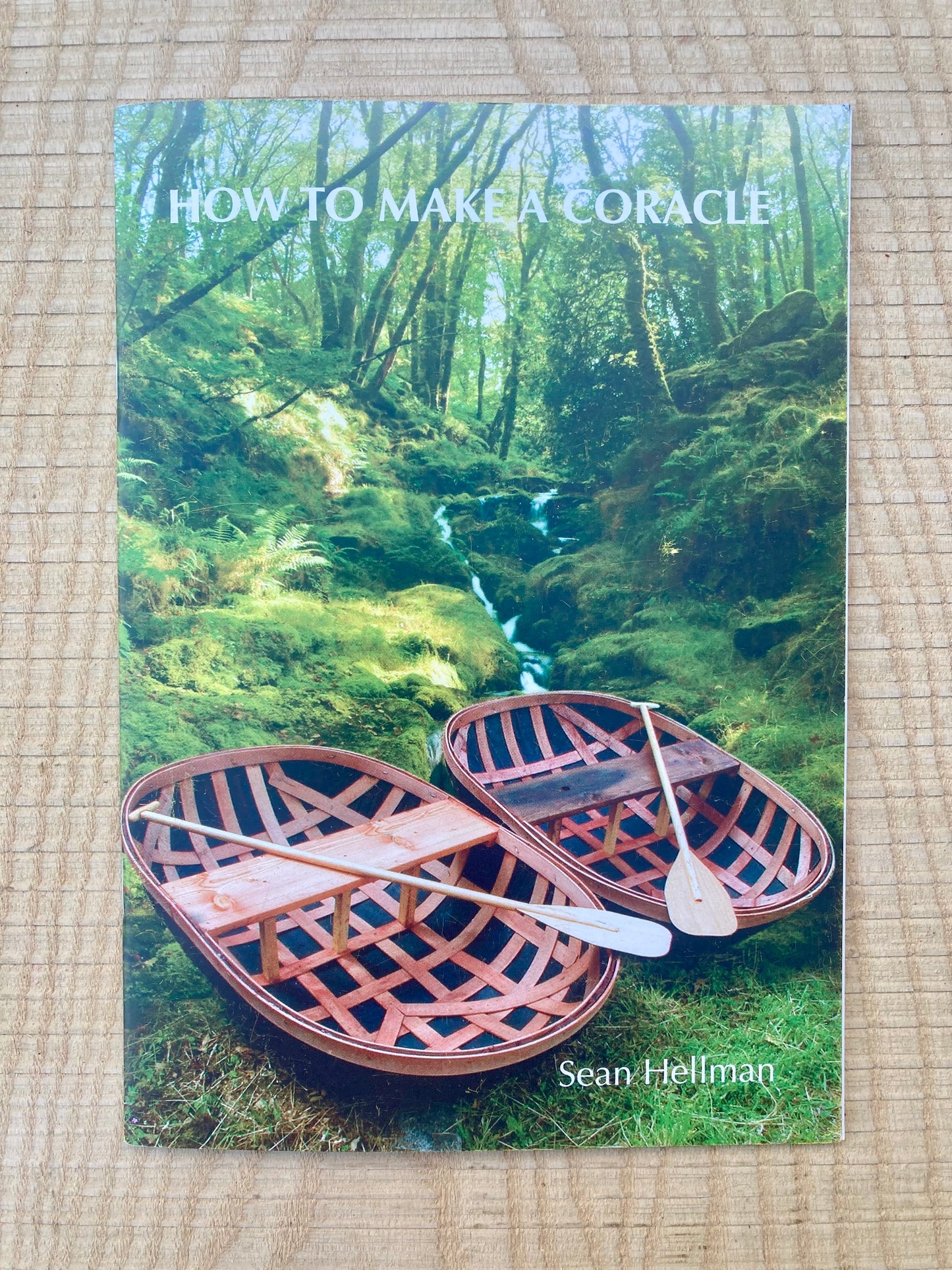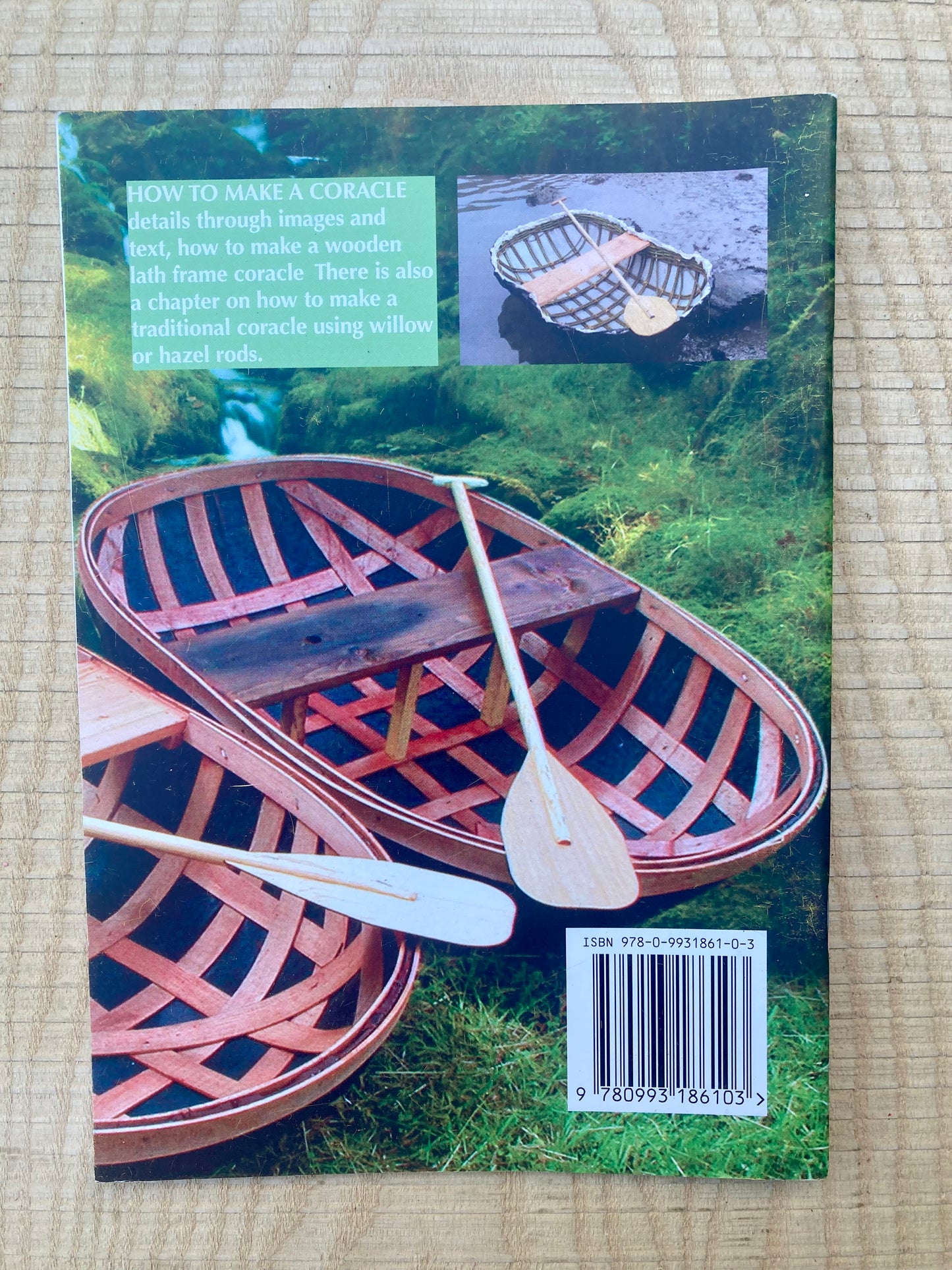1
/
of
2
How to make a Coracle - Sean Hellman
How to make a Coracle - Sean Hellman
Regular price
£6.00 GBP
Regular price
Sale price
£6.00 GBP
Unit price
/
per
Couldn't load pickup availability
This book has 24 pages with full colour photographs detailing each step involved in making your first coracle.
This book tells you everything you need to know about how to make a coracle and how to paddle your coracle. Each step is illustrated with a photograph, with text to explain each of the photographs. Please note that this book describes how to make a coracle from ash laths, with a chapter on making a traditional coracle with hazel or willow rods.
Coracles are different from most other river craft due to their weight, construction and how they are paddled.
Traditionally made from willow, ash or hazel and covered in a large animal hide, they are now often made from ash lath and calico which has been waterproofed with bitumen paint. They can weigh between 25 and 40 pounds and are easily carried with the aid of a strap around the front of the shoulders, and are paddled by a single paddle which is held in both hands over the front of the coracle, and then moved in a figure of 8 action. The coracle is thus pulled through the water. When fishing with nets, one hand will be holding the net and the other hand, the paddle. Paddling single handed will take time to master properly.
The coracle is a very shallow, drafted boat with no keel, and therefore is perfect for rivers that other boats would be grounded in. They are often carried up the river and floated down, as it can be impossible or at least hard work to paddle up stream for any distance. Crossing the current is easy and this was often the main use of the coracle: to ferry people and goods, across stream. Even when toll bridges were built, people often resented paying the toll and carried on using their coracles.
Apart from transportation, the other main use was fishing, either by line or by nets. With net fishing, a net is held between 2 coracles which drift down river taking salmon or sea trout. To do this you have to have a license which is issued yearly, by the appropriate river authority
Each river in Wales has its own design of coracle. For example; Teifi in Cardigan; Tywi in Carmarthen; Taf in Cardiff; Cleddau in Haverfordwest; Wye in Chepstow and apparently 3 designs on the river Servern.
The coracle is not just a Welsh boat but can be found across the world from Britain and Ireland to France, India, Veitnam, Iraq and many other places. Because of the way it is constructed and the materials used, I would assume that most cultures who wanted to use a boat would have made something like a coracle at one time or another.
Soft cover booklet with 22 colour pages.
This book tells you everything you need to know about how to make a coracle and how to paddle your coracle. Each step is illustrated with a photograph, with text to explain each of the photographs. Please note that this book describes how to make a coracle from ash laths, with a chapter on making a traditional coracle with hazel or willow rods.
Coracles are different from most other river craft due to their weight, construction and how they are paddled.
Traditionally made from willow, ash or hazel and covered in a large animal hide, they are now often made from ash lath and calico which has been waterproofed with bitumen paint. They can weigh between 25 and 40 pounds and are easily carried with the aid of a strap around the front of the shoulders, and are paddled by a single paddle which is held in both hands over the front of the coracle, and then moved in a figure of 8 action. The coracle is thus pulled through the water. When fishing with nets, one hand will be holding the net and the other hand, the paddle. Paddling single handed will take time to master properly.
The coracle is a very shallow, drafted boat with no keel, and therefore is perfect for rivers that other boats would be grounded in. They are often carried up the river and floated down, as it can be impossible or at least hard work to paddle up stream for any distance. Crossing the current is easy and this was often the main use of the coracle: to ferry people and goods, across stream. Even when toll bridges were built, people often resented paying the toll and carried on using their coracles.
Apart from transportation, the other main use was fishing, either by line or by nets. With net fishing, a net is held between 2 coracles which drift down river taking salmon or sea trout. To do this you have to have a license which is issued yearly, by the appropriate river authority
Each river in Wales has its own design of coracle. For example; Teifi in Cardigan; Tywi in Carmarthen; Taf in Cardiff; Cleddau in Haverfordwest; Wye in Chepstow and apparently 3 designs on the river Servern.
The coracle is not just a Welsh boat but can be found across the world from Britain and Ireland to France, India, Veitnam, Iraq and many other places. Because of the way it is constructed and the materials used, I would assume that most cultures who wanted to use a boat would have made something like a coracle at one time or another.
Soft cover booklet with 22 colour pages.
Share



